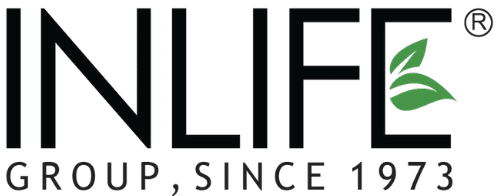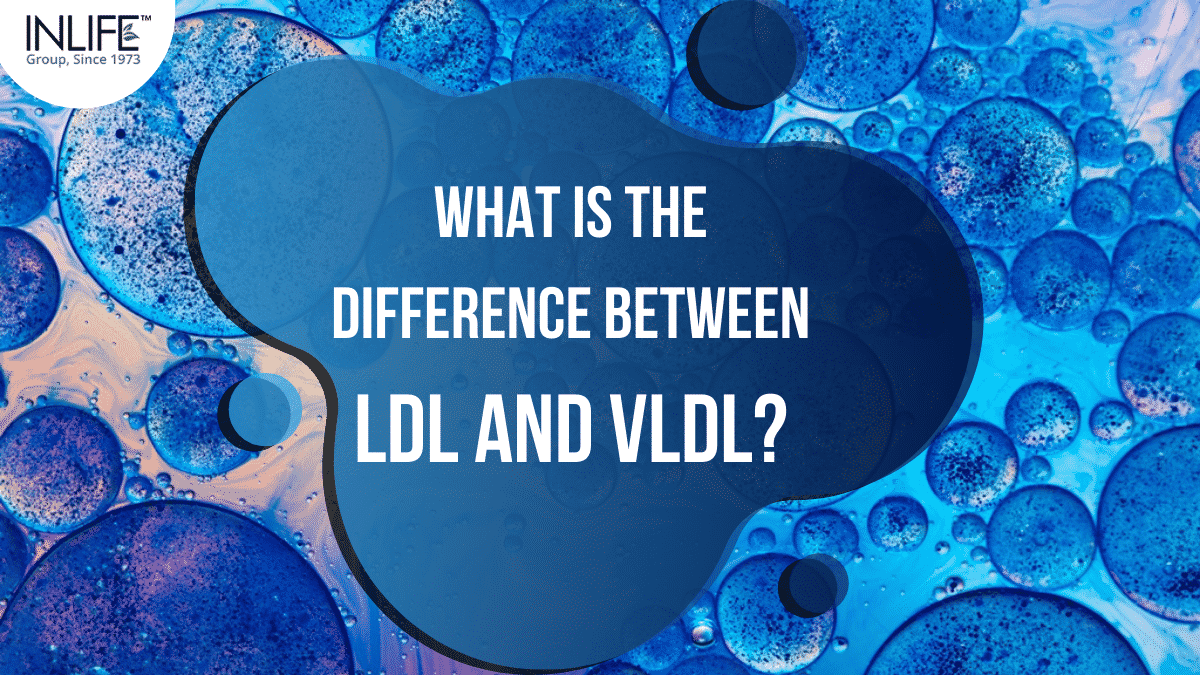Cardiac Health, Diabetes Care, Health, Lifestyle, Stress Management, Weight Management
What Is The Difference Between LDL And VLDL?
Low-density lipoproteins (LDL) and very-low-density lipoproteins (VLDL) are two different types of lipoproteins found in your blood. Lipoproteins are a combination of proteins and different types of fats. They carry cholesterol and triglycerides through the bloodstream.
Cholesterol is a fatty substance which is important for building cells. In your body, it is most commonly created in the liver through a complex pathway. Triglycerides are another type of fat that is used to preserve extra energy in your cells.
The major difference between LDL and VLDL is that their protein, cholesterol, and triglycerides’, which are responsible for making up each lipoprotein, percentages vary have different. While VLDL contains more triglycerides, LDL contains more cholesterol.
Both these types of lipoproteins are considered to be “bad” cholesterol. Even Though your body required triglycerides and cholesterol to function, excess of these two types of “bad” cholesterol will build them up in the arteries. This will eventually put you at great risk for heart diseases/ conditions and stroke.
What Is VLDL?
VLDL is created in the liver. It carries triglycerides throughout the body.
The cells in your body use triglycerides that are carried by VLDL for energy. Eating more sugars or carbohydrates than your body can burn will result in a high amount of VLDL and an excessive amount of triglycerides in the blood. Whatever extra triglycerides are there, they get stored in fat cells and are released when energy is needed.
High levels of triglycerides are associated with building hard deposits in the arteries, which are commonly referred to as plaques. Plaque buildup is not a good thing as it increases your chances of getting heart diseases and stroke. Studies suggest that this might be due to:
- Changes in the lining of blood vessels
- Increased blood pressure
- Increased inflammation
- Low levels of HDL (high-density lipoprotein), “good” cholesterol
High triglycerides are also linked with non-alcoholic fatty liver disease and metabolic syndrome.
What Is LDL?
LDL is the leftover amount VLDL which is transformed after getting cleared in the bloodstream. This transformation process is done by the enzymes in your blood. LDL, when compared to VLDL, has fewer triglycerides and a greater percentage of cholesterol.
LDL carries cholesterol throughout the body and excess of it leads to high levels of LDL. These high levels also lead to plaque buildup in the arteries.
Eventually, these deposits lead to atherosclerosis. This occurs when plaque deposits harden and narrow the artery. Also, it increases your risk of having a stroke and heart attack.
What treatment option will suit you the best is determined by the level of your total cholesterol, HDL and LDL along with various other factors.
You should talk to your doctor about your cholesterol and how you can lower the heart disease’s risk. They will draw out a diet plan, lifestyle changes, medication, and exercise routine, if necessary.
What Is The Difference Between LDL And VLDL?
Definition
LDL is a lipoprotein of blood plasma which is composed of a medium proportion of protein with some triglyceride and a high proportion of cholesterol, and that is linked to an increased probability of developing atherosclerosis.
VLDL is a plasma lipoprotein produced primarily by the liver that has a relatively large amount of triglycerides compared to protein, and that leaves a residue of cholesterol in the tissues during the process of conversion to LDL.
Significance
LDL contains more cholesterol.
VLDL contains more triglycerides.
Composition
LDL is largely made up of 25% cholesterol, 10% triglycerides, 25% proteins, and 15% other fats.
VLDL is made up of 10% cholesterol, 70% triglycerides, 10% proteins, and 10% other fats.
Density
LDL’s density is 1.019 – 1.063g/ml.
VLDL’s density is 0.95 – 1.006g/ml.
Function
LDL transports fat molecules, including fat molecules (phospholipids, triglycerides, cholesterol, etc.) around the body.
VLDL transports triglycerides from the liver to the adipose tissue.
What Are The Similarities Between LDL And VLDL?
Well, yes, we are only talking about the differences between the two here. But it wouldn’t hurt to know a few similarities.
VLDL and LDL are two types of lipoproteins which are responsible for transporting lipids through the blood and extracellular fluid.
As seen above, they contain variable amounts of triglycerides, proteins, cholesterol, and other fats.
Both of these occur in small amounts in the circulation under normal conditions.
Besides, both collect inside the artery walls leading to atherosclerosis.
How To Determine Your Cholesterol Level?
It is difficult to know if you have high cholesterol as it does not cause any visible or noticeable symptoms.
The only way to determine your cholesterol level is through a blood test which measures the cholesterol in mg/dL (milligrams per deciliter of blood).
Once you get your cholesterol checked, your results will show the following:
Total Blood Cholesterol
This includes your LDL, HDL and 20% of your total triglycerides.
Triglycerides
This should be below 150mg/dL. There are a common type of fat, and if they are high and your LDL is high, and HDL is low, then you are at risk of developing atherosclerosis.
HDL: This number should be as high as possible. For females, the number should be higher than 55mg/dL and 45mg/dL for males.
LDL: This number should be as low as possible. Also, if you do not have any blood vessel disease, diabetes, or heart diseases, then it should not exceed 130mg/dL. Further, if you have high total cholesterol, the number should not be more than 100 mg/dL.
How Are VLDL And LDL Tested?
People generally get their LDL level tested white they go for their regular physical examination. Its level is usually tested as a part of the cholesterol test itself.
It is recommended that individuals once crossed the age of 20 should get their cholesterol checked once every four to six years. Further, these levels might have to follow up frequently if you are at a higher risk for heart disease or to monitor any treatment.
As per VLDL, there isn’t any specific test. It is usually eliminated depending on your triglycerides level. These levels are also generally tested while testing for cholesterol itself.
Most doctors do not calculate your VLDL unless asked or you have the following:
- Certain abnormal cholesterol conditions
- Other risk factors for cardiovascular disease
- Early-onset heart disease
- You are at risk of cardiovascular disorders if you have any of these:
- Increased weight
- Increased age
- Smoking
- Having a family history of cardiovascular disease
- Lack of regular physical activity
- Having diabetes or high blood pressure
- Unhealthy diet (food high in animal fat and sugar and low in vegetables, fruits, and fibre)
How To Treat High Cholesterol?
While there are tests and medication to treat high cholesterol, doctors often recommend to include these in your life:
- Stopping smoking
- Exercising regularly
- Eating a healthy diet
- Reducing stress
Sometimes lifestyle changes alone are not enough, especially if you have FH. You might need one or more medications, such as:
- Bile-acid-binding medications to help your body use the extra cholesterol to produce bile.
- Injectable medications which help your liver to absorb more LDL cholesterol.
- Statins to help your liver get rid of cholesterol.
- Cholesterol absorption inhibitors to prevent your small intestines from absorbing cholesterol and releasing it into the bloodstream.
- Medications and supplements to reduce triglyceride levels can also be used, such as niacin (Niacor), fibrates, and omega-3 fatty acids.
How Does Your Diet Impact Cholesterol Levels?
You will have to eat the following foods to increase HDL and reduce total cholesterol:
- Skinless poultry, lean pork, and lean red meat
- A range of fruits and vegetables
- Whole grains
- Vegetable or olive oils
- Baked or grilled fatty fish such as salmon, tuna, or sardines
- Unsalted seeds, nuts, and legumes
- The foods you should avoid as it may increase LDL cholesterol:
- Full-fat dairy products
- Untrimmed red meat
- Tropical oils
- Baked goods made with trans fats or saturated fats
- Fried foods
- Foods with hydrogenated oils
High cholesterol, without doubt, is concerning. However, it is a warning signal in most of the cases. If you are diagnosed with this, it does not mean that you will have a stroke or develop heart disease. But, it is important that you take it seriously.
If you have it and do things to reduce it, your risk will also decrease. Making lifestyle changes that will help reduce cholesterol not only reduce it, but also support your overall health.
How Can You Prevent High Cholesterol?
You are never too young to start taking action to prevent high cholesterol. The first and most important step is to eat a healthy diet.
Also, the strategy to lower your LDL and VLDL levels are the same. First, increase physical exercise and eat a variety of healthy foods.
If you are a smoker or consume alcohol frequently, you might want to quit doing so. Smoking increases your risk of not only high cholesterol, heart disease, high blood pressure, and many types of cancer.A
You can consult with your doctor to get the best recommendation on healthy lifestyle changes that would be effective.
Here are a few changes that you can start making to notice changes.
- Switch from traditional pasta to whole wheat pasta and from white rice to brown rice.
- Use olive oil and a squirt of lemon juice in place of high-fat salad dressings.
- Fish is very healthy. If you are a vegetarian, you can include it in your diet at least twice a week.
- Drink plain water flavoured with fresh fruit slices or seltzer water instead of soda or fruit juices.
- Switch to low-fat Greek yoghurt from sour cream. Also, greek yoghurt has a similar tart flavour so you really won’t be missing your sour cream.
- Include whole-grain cereals instead of sugar-filled varieties and top them with cinnamon in place of sugar.
- Eat nuts, steel-cut oatmeal, avocados, and fish rich in omega-3 fatty acids, like salmon and halibut.
- Avoid saturated fats, which are mostly found in foods like butter, beef, and cheese.
Exercise for at least half an hour every day. It has a positive effect on your cholesterol levels. If you are someone who spends a lot of time sitting, start moving around in between. If you have a desk job, set the alarm on your computer or your cellphone to stretch and walk a few steps. Taking 250 steps an hour proves to be very helpful. Additionally, you could also get a fitness tracker that reminds you to get up and move for a few minutes each hour. Walking, cycling or swimming are great options as they give a full-body exercise.
If you do not know your cholesterol numbers, consult with your doctor about getting tested, especially if you have a family history of heart disease or high cholesterol. The earlier you know your cholesterol numbers, the sooner you will be able to take steps to manage them.


